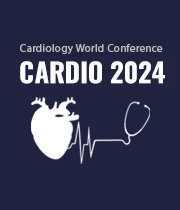Title : TIMI risk index as a predictor of no-reflow phenomenon after primary PCI in patients presented with ST Segment Elevation Myocardial Infarction (STEMI)
Abstract:
Background/Aim: Coronary artery disease and acute coronary syndrome (ACS) are the major causes of death, worldwide. Risk assessment for patients with ACS is necessary to minimize morbidity and mortality. GRACE risk score (GRS), TIMI risk score (TRS), and the TIMI risk index (TRI) have been used for patients with ACS to stratify their risk. We showed at our study the value of pre admission TRI, TRS, and GRS in prediction of no?reflow (NRF) Phenomenon after primary PCI for patients with STEMI; and its impact on the in?hospital outcome for those patients.
Patients and Methods: Our study included 319 patients presented with STEMI and managed by primary PCI. For all patients, we recorded a detailed history, clinical examination as well as Killip class, electrocardiogram, and echocardiography. TRI as well, TRS, and GRS were calculated for all patients. We observed all patients during their PCI at the catheterization room to monitor the result of the intervention. NRF was defined as TIMI flow grade less than III or TIMI flow Grade III with myocardial blush grade less than or equal to II. Then, we followed the patients during their hospitalization period to record any associated complications and mortality.
Results: We found of all the study population, 70 patients (21.9%) were in the NRF group (group B), thus according to MBG flow. We found NRF patients older than reflow patients, thus regarding age. Killip Class III?IV was found to be more common in NRF patients. TRI as well, TRS and GRS showed higher values among the NRF patients. As well, in?hospital major adverse cardiac events (MACEs) and mortality were more common in NRF patients.
Conclusion: We found that the high TRI values were related to the occurrence of NRF, in hospital MACE, and mortality.



